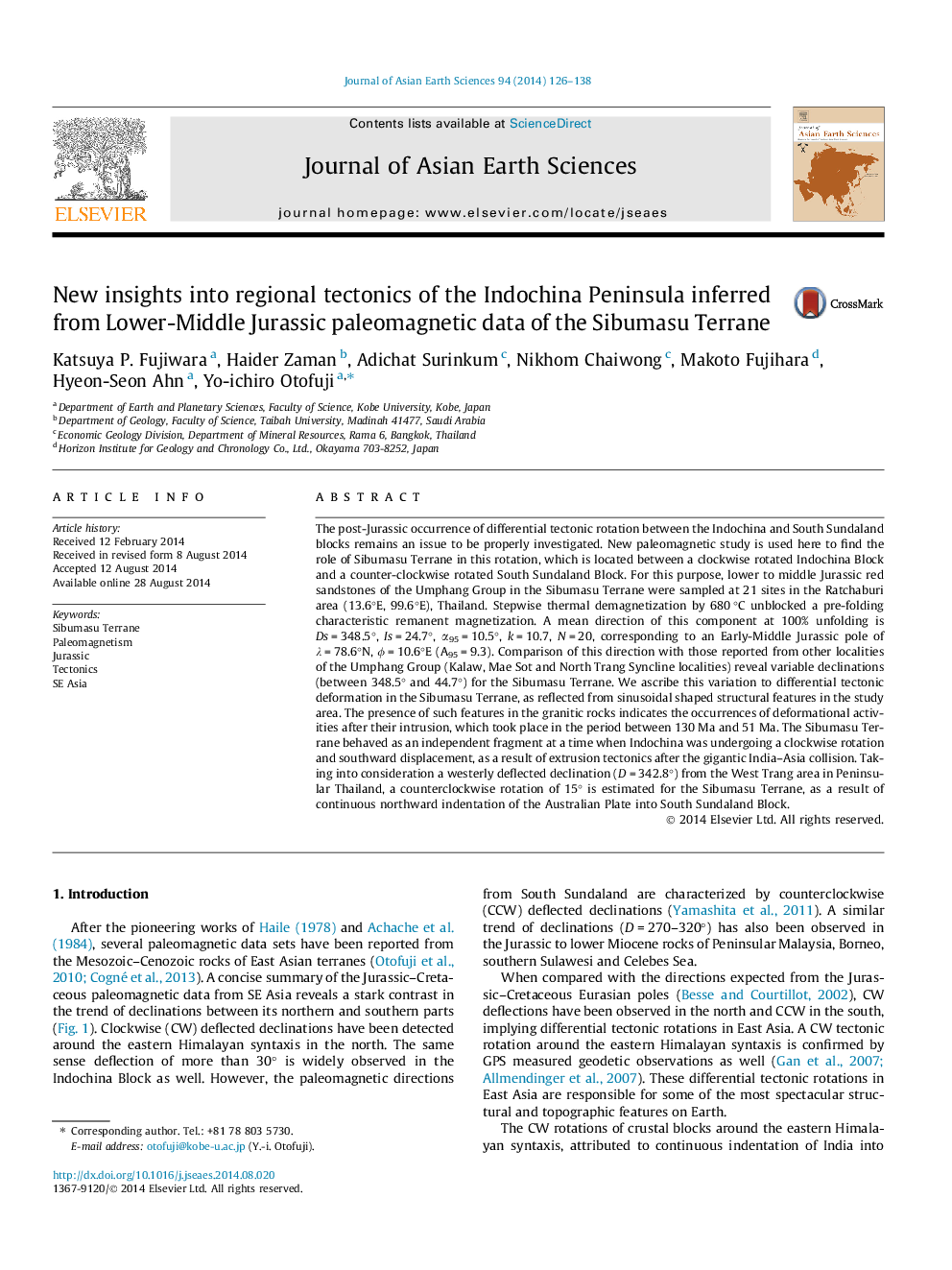| کد مقاله | کد نشریه | سال انتشار | مقاله انگلیسی | نسخه تمام متن |
|---|---|---|---|---|
| 4730586 | 1640374 | 2014 | 13 صفحه PDF | دانلود رایگان |

• Reliable NRM direction is discovered in the Early-Middle Jurassic rocks from the Ratchaburi area.
• The coeval rocks in the Sibumasu Terrane reveal variable declinations between 348.5° and 44.7°.
• Variable declinations pass oroclinal test for sinusoidal structure in the Sibumasu Terrane.
• The sinusoidal structure in the Sibumasu Terrane is ascribed to tectonic deformation.
• The Sibumasu Terrane is tectonically independent of the CW rotated Indochina Block.
The post-Jurassic occurrence of differential tectonic rotation between the Indochina and South Sundaland blocks remains an issue to be properly investigated. New paleomagnetic study is used here to find the role of Sibumasu Terrane in this rotation, which is located between a clockwise rotated Indochina Block and a counter-clockwise rotated South Sundaland Block. For this purpose, lower to middle Jurassic red sandstones of the Umphang Group in the Sibumasu Terrane were sampled at 21 sites in the Ratchaburi area (13.6°E, 99.6°E), Thailand. Stepwise thermal demagnetization by 680 °C unblocked a pre-folding characteristic remanent magnetization. A mean direction of this component at 100% unfolding is Ds = 348.5°, Is = 24.7°, α95 = 10.5°, k = 10.7, N = 20, corresponding to an Early-Middle Jurassic pole of λ = 78.6°N, ϕϕ = 10.6°E (A95 = 9.3). Comparison of this direction with those reported from other localities of the Umphang Group (Kalaw, Mae Sot and North Trang Syncline localities) reveal variable declinations (between 348.5° and 44.7°) for the Sibumasu Terrane. We ascribe this variation to differential tectonic deformation in the Sibumasu Terrane, as reflected from sinusoidal shaped structural features in the study area. The presence of such features in the granitic rocks indicates the occurrences of deformational activities after their intrusion, which took place in the period between 130 Ma and 51 Ma. The Sibumasu Terrane behaved as an independent fragment at a time when Indochina was undergoing a clockwise rotation and southward displacement, as a result of extrusion tectonics after the gigantic India–Asia collision. Taking into consideration a westerly deflected declination (D = 342.8°) from the West Trang area in Peninsular Thailand, a counterclockwise rotation of 15° is estimated for the Sibumasu Terrane, as a result of continuous northward indentation of the Australian Plate into South Sundaland Block.
Journal: Journal of Asian Earth Sciences - Volume 94, November 2014, Pages 126–138